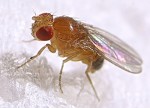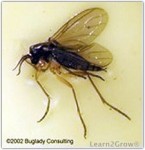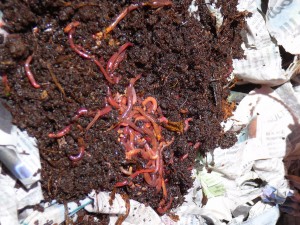by Wonder Worman | Jan 28, 2011 | Red Wiggler World
 I am heading to Vegas to meet 4 of my college girlfriends and to celebrate the Year of the 40! Good times will be had by all and there will definitely be lots of eating, drinking, dancing and laughing. Everything will be in excess! Which is all Vegas Style, right?!
I am heading to Vegas to meet 4 of my college girlfriends and to celebrate the Year of the 40! Good times will be had by all and there will definitely be lots of eating, drinking, dancing and laughing. Everything will be in excess! Which is all Vegas Style, right?!
Vegas is the land of excess. It’s full of non stop lights, sounds and sights. It’s an overload for your senses. There are All You Can Eat Buffets, restaurants which are open 24 hours, lights that never shut off, lights that flash, ringing sounds, dinging sounds, thumpin’ music, rotating doors, spinning doors, elevators, and escalators and the list goes on…. The place is just on fire!
I have mixed feelings about Vegas….. America’s Crazyville, America’s Place of Indulgence and in my opinion, One of America’s Most Wasteful Places. Yes, I realize I am participating in this waste and supporting Vegas with my cash. This isn’t my first rodeo either. This will be # 4. #1 was when I got married to my Carlos! #2 was a get away with my Carlos and #3 was another get away with my Carlos. My Carlos loves VEGAS!
This visit will be a bit different for me. Of course, I am going to party my butt off, but I am also going there with a mission….a Worman Mission. I am going to record a few things…things like trash cans and restaurants. I may even ask the hotel manager how much they pay for utilities and if they compost! lol….Geez, I can’t even begin to imagine the cost to keep the lights on and the water running! Now, I am really curious and really excited to get my butt there! Wooohoo! 30 min and ticking, dinging and ringing………
by Wonder Worman | Jan 24, 2011 | Red Wiggler World
 See the white specks on the decomposing leaf? They are mites. Mites are part of the decomposition cycle and are also members of a worm bin, too. They will not harm the Red Wigglers as long as there isn’t an explosion in their population. Mites feed on decaying matter and are usually found on the surface but may go deeper depending on where the food is located.
See the white specks on the decomposing leaf? They are mites. Mites are part of the decomposition cycle and are also members of a worm bin, too. They will not harm the Red Wigglers as long as there isn’t an explosion in their population. Mites feed on decaying matter and are usually found on the surface but may go deeper depending on where the food is located.
Cause: Typically an explosion is a result of too much food and possibly too much moisture. This usually occurs on the surface where the food scraps are placed. If there is an explosion in the mite population, the Red Wigglers will avoid the food and move to another area in the bin. I usually see an explosion of mites when I put in too many cantaloupe rinds. The Red Wigglers can’t handle the amount of scraps and the mites take over. If that happens, then the Red Wigglers will not be able to get the food and may starve.
Treatment: If there are too many mites in your bin, then you’ll want to make some changes. I suggest doing one or maybe all of these ideas.
1) Remove the food source where the explosion is occurring. Usually it will be covered in mites to the point where you can barely see the food. I would toss it into your yard or bury it.
2) Remove the top few inches of bedding. Sometimes the mites are covering the top of the bedding.
3) Leave the bin open and expose it to light. This will help dry out the surface. Mites do not like a dry area. The sun light will also help to control the mite’s population.
4) Add some dry newspaper to absorb the excess moisture.
5) Stop feeding for a week. Freeze any food scraps that you are producing in the meantime.
Happy Wormin’
by Wonder Worman | Jan 19, 2011 | Red Wiggler World
-

-
This looks icky to us, but the worms will eat this even though it is a citrus fruit!
-

-
Fuzzy, wuzzy, moldy, woldy, strawberry
These moldy fruits look very nasty and if eaten could make you feel pretty nasty, too! Mold springs up in damp places like your basement, bathroom and even on your food. These spores are airborne and find that perfect, damp place to multiply. In the case of composting, they like to feed on the decaying food scraps. The strawberry and ortaniques above are infested with different forms of mold. When you find moldy fruits and veggies in your fridge or on your counter top, you can feed these to your Red Wigglers. Normally, I don’t feed my Red Wigglers copious amounts of citrus fruits. When the fruits develop mold, the wigglers with eat the fruit. The mold must change the chemical make up of the fruit…acidic to sweetic! lol… I have seen a lot of Red Wigglers all over lemons and oranges once the mold has set in!
If you have mold developing in your bin (on the top layer of the composting food),there could be a few things going on in the bin….
1) You could be feeding your worms too much and may need to back off until they have eaten what is left. In the meantime, freeze any scraps that you are producing.
2) Your bin could be to wet so add more shredded newspaper.
3) Bury the food so new air borne spores won’t attack the food.
4) Remove the moldy food if there is a nasty smell…..You’ll know…blah!
There really isn’t a threat to they worms, but may bother people with mold allergies. Mold is another decomposer that is present in the decomposition cycle.
by Wonder Worman | Jan 18, 2011 | Red Wiggler World
-

-
A fruit fly has red eyes and it’s body is a yellow orange color.
-

-
Adult fungus gnat is black and smaller than a fruit fly
Both the fruit fly and fungus gnat are rather annoying to me, and unfortunately they are part of the composting system. They are attracted to decomposing and rotting food. So if you are composting with or without worms, you are going to attract these creatures. The upside to these winged creatures is their short life span. Many sites claim they live for a day to a week depending on the temperature and the availability of food. They do reproduce quickly if food is around for them to feast on so it may seem that they live forever. Also, the warmer the weather, the longer the life span and the more they reproduce. The opposite is true for the cooler weather.
Sign: The mantra buzzing around is “Everything in moderation”. This is true for the fruit fly and fungus gnat. You don’t want a herd of these creatures. For example, if you were to open the bin and a swarm rushes out to you and tries to get up your nose and in your mouth, then things need to change in the bin. They are just giving you a sign that you are producing more food scraps than the wigglers can handle. So the decomposing food is very appealing to the wigged creatures, and they will begin to lay their eggs in the food and the wet bedding. A swarm like this will deter your wigglers from coming to the surface to feed on the food scraps.
Solution: There are a few things you can do to rid yourself of a majority of these guys. Once again a few won’t harm your wigglers. and are actually speeding up the composting process. They are more of a nuisance to us, but if you have a swarm try one or all of these methods.
– stop feeding for a week or until the wigglers consume what is left in the bin. In the meantime, the scraps that you are producing can be stored in the freezer.
– burry the food scraps in the bedding so the flies can’t get to them.
– cover the bedding with extra sheets of newspaper.
– add some peat moss, or shredded paper to absorb any extra moisture.
– put the bin outside, over night ,exposed to cooler temperatures.
– buy fly paper
– put some fruit juice with a bit of soap in a bottle. The flies will go in and die….so sorry
Happy wormin’
Here’s where I got some info on the fruit fly and the fungus gnat.
by Wonder Worman | Jan 14, 2011 | Red Wiggler World
There are many different types of ants out there in this world. The type that may infest your bin depends on the area in which you live in. There are fire ants, sugar ants, carpenter ants, acrobat ants, harvester ants. I know I have left out a bunch, but you get my drift, right? Basically there are many, many types. I really, really, really don’t care for these creatures. When I lived in Dallas, I stupidly sat on a fire ant mound and was bitten a billion times. They are nasty little creatures! I know they were defending themselves, and I was unaware of my area but come on! I actually don’t care for fast moving insects like spiders, centipedes, millipedes, and ants. Their legs freak me out and send shivers all over my body! I don’t have this reaction to Red Wigglers because they are slow and calm. They don’t have appendages that move quickly. Occasionally, I find various creatures in my worm bin, including ants. Most of these are harmless and actually speed up the composting process. If you find a swarm of these, it’s a sign that things need to change. So, in my series “Creature Feature”, I will be sharing my knowledge of worm bin invaders and steps to take if there is a swarm. Today’s feature is the ANT If you find a few in your bin, that isn’t really a problem, but most likely there are more around that you don’t see. They eat food scraps, fungi, other ants (that’s mean) and wood. Depending on the ant you have in your bin will also tell you about the conditions of your bin. Most ants are attracted to dry areas with food so this might be a sign that the bin is too dry. The carpenter ant is an exception though. They are attracted to moist wood. Treatment Most ants don’t like moisture so you could add more moisture to the bin and bury the food scraps in the bedding. You could also have water traps around the bin, kind of like a moat. They won’t want to cross that and will look for food else where. If you have carpenter ants and have a wooden bin, check around the perimeter to see if there is a rotting log and remove it. Then relocate your bin and keep an eye out for the ants. I have a client who had a swarm of carpenter ants. I removed the bedding and worms. We moved the bin to a different area away from the logs and wood. So far so good and the ants have not returned. I don’t recommend spraying a chemical around the worm bin to get rid of the ants. Just sharing what I know! Please comment if there are methods that have worked for you!
by Wonder Worman | Jan 13, 2011 | Red Wiggler World
 I love my Red Wigglers and try my best to keep them safe and happy. Occasionally, there are a few unwanted visitors in the worm bin. In the next few days, my posts will focus on a few creatures and why they are in the bin and whether or not they are harmful to the Red Wigglers. Stay tuned!
I love my Red Wigglers and try my best to keep them safe and happy. Occasionally, there are a few unwanted visitors in the worm bin. In the next few days, my posts will focus on a few creatures and why they are in the bin and whether or not they are harmful to the Red Wigglers. Stay tuned!
 I am heading to Vegas to meet 4 of my college girlfriends and to celebrate the Year of the 40! Good times will be had by all and there will definitely be lots of eating, drinking, dancing and laughing. Everything will be in excess! Which is all Vegas Style, right?!
I am heading to Vegas to meet 4 of my college girlfriends and to celebrate the Year of the 40! Good times will be had by all and there will definitely be lots of eating, drinking, dancing and laughing. Everything will be in excess! Which is all Vegas Style, right?!






